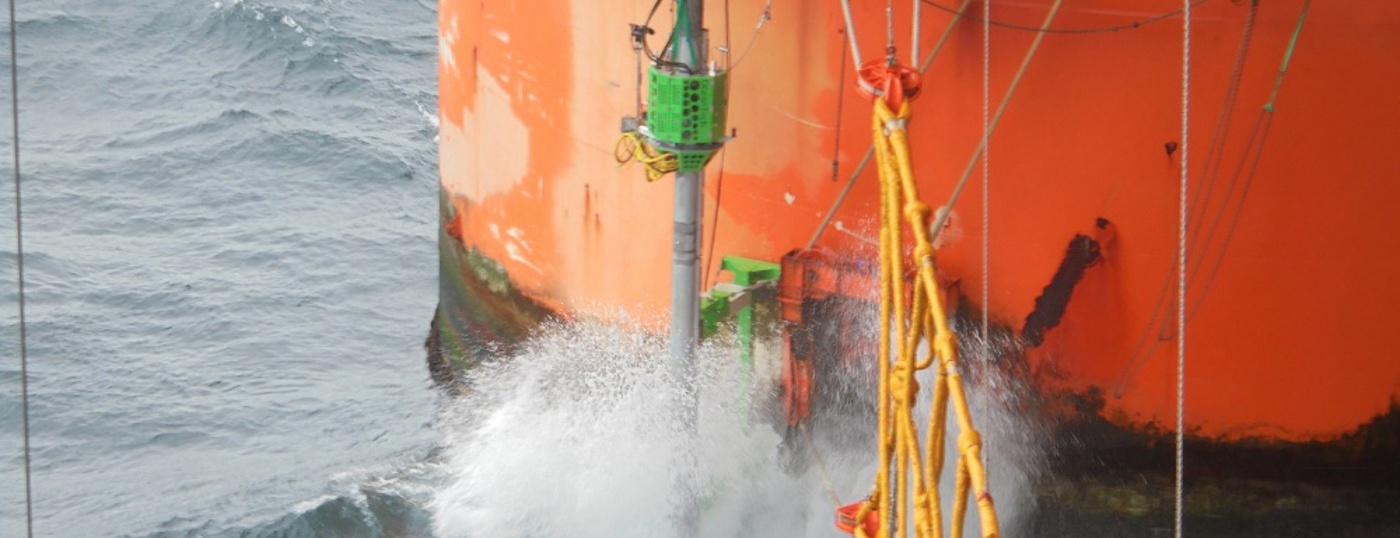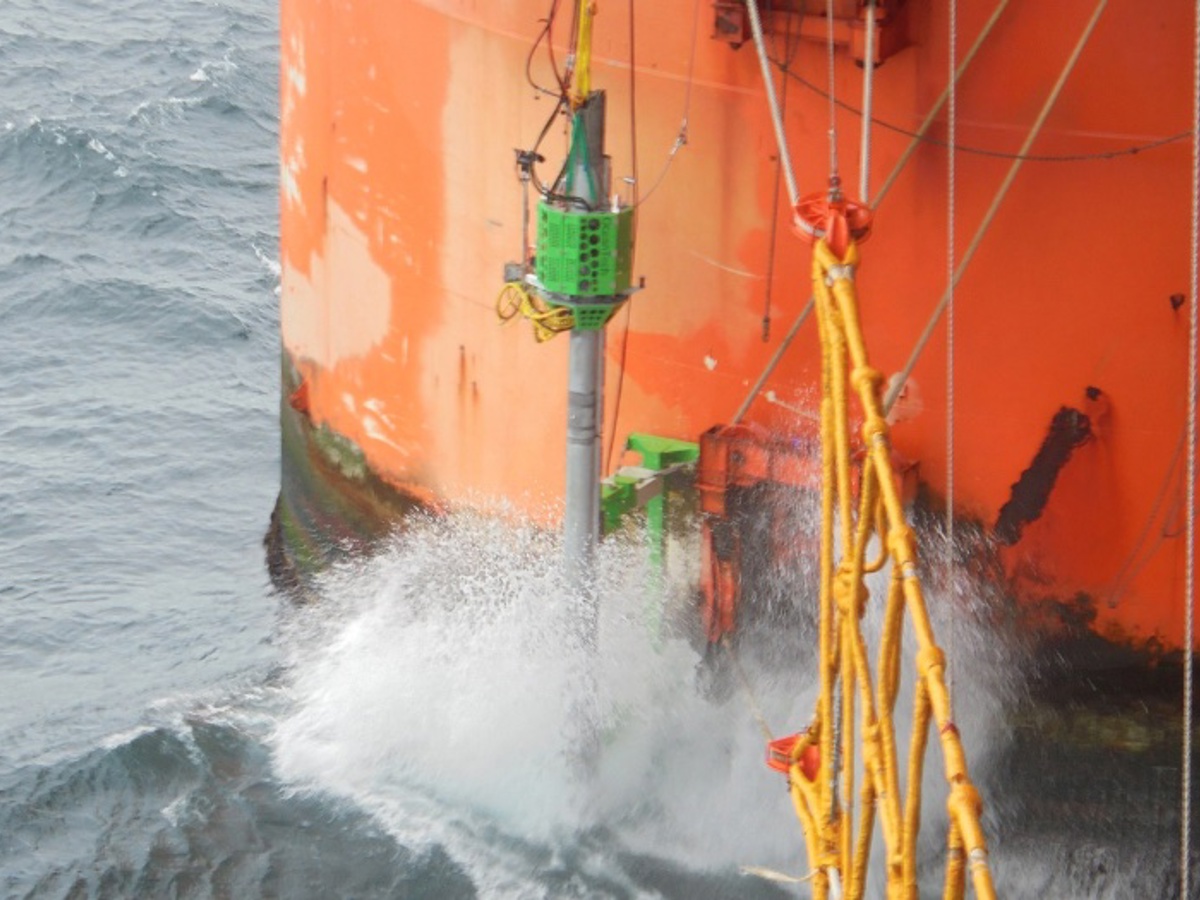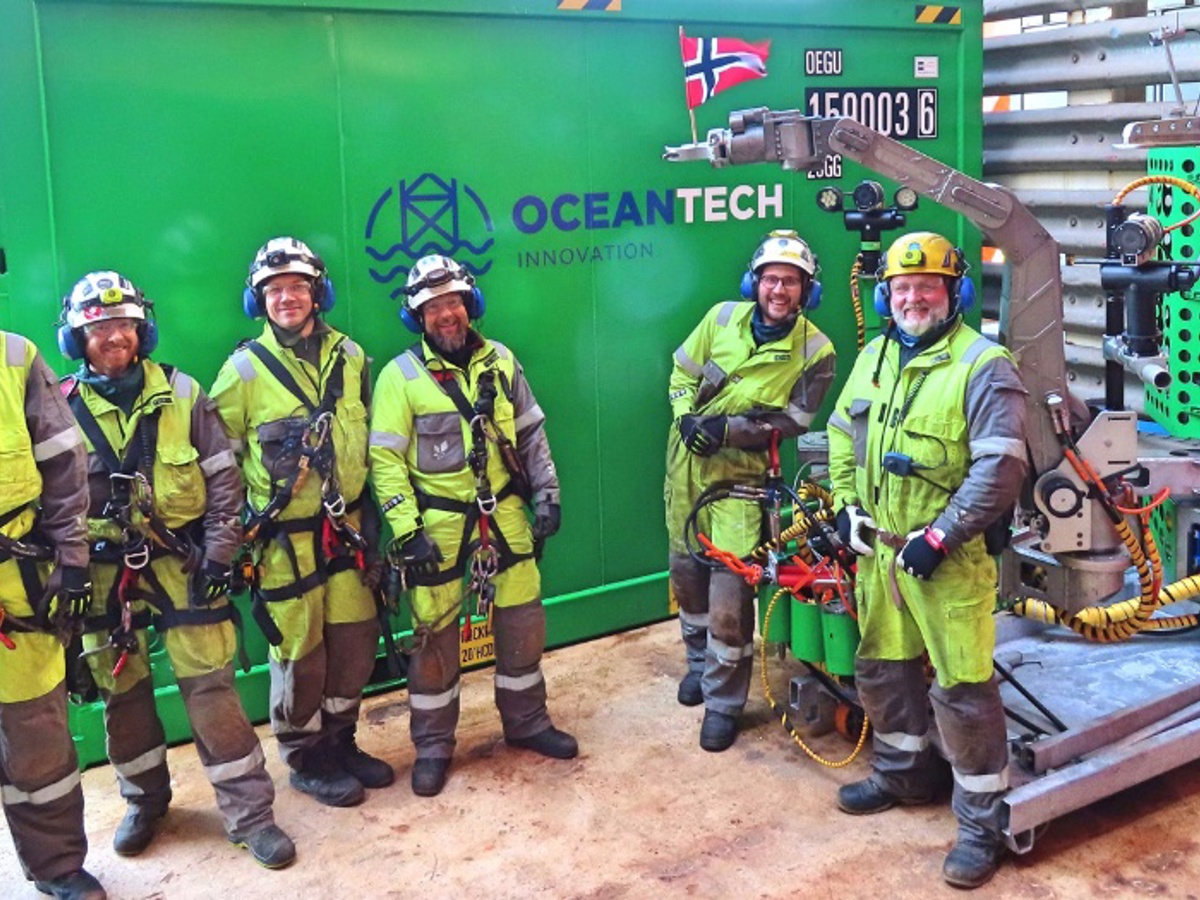Equinor’s Snorre field in the Tampen area of the Norwegian North Sea has produced oil and gas since 1992. The Snorre A platform*, a floating tension-leg platform moored to the seabed by steel tethers, is protected by riser protection nets on both sides. These nets are stretched between the platform’s columns and have a capacity of 10.6 MJ.
The lifetime of riser protection nets is usually around 25 years. When it’s time for their replacement, it requires a complex operation with custom tools and skilled personnel. Fairlead wheels, pins, and cassettes sometimes need replacing too. That was the case at Equinor’s Snorre A platform.
– While replacing their nets, Equinor discovered that the fairlead wheels, pins, and cassettes were fatigued, Kristian Ohr, Technical Manager at OceanTech, said.
OceanTech has been collaborating with Equinor for several years. In 2019, Equinor hired OceanTech to replace the old fairlead wheels to prevent unnecessary production shutdowns and extend the platform’s lifetime.
The challenging North Sea environment
The Tampen area of the North Sea is a key area for Norwegian petroleum activities. But as in other parts of the North Sea, weather and working conditions can be harsh and unpredictable, especially in the splash zone. This is the part of the platform structure immediately above (+20 feet) and below (-50 feet) the waterline. The confined work area, combined with strong currents and big waves, can cause significant problems for divers and remotely operated underwater vehicles (ROVs).
– I’m aware of several operators in the North Sea that haven’t been able to complete splash zone operations using divers and ROVs, Ohr said.
The guide wheels and main fairlead wheel, all located in the splash zone of the Snorre A platform, weigh around 600 kilograms, Ohr added.
– It can be challenging to replace heavy components like fairlead wheels ten meters below the ocean surface. The splash zone is turbulent and offers limited inspection and surveying possibilities, he said.
A turnkey project making full use of robotic solutions
Riser protection nets at offshore facilities carry huge amounts of energy, and maintenance work on attachment structures requires powerful subsea tooling. The OceanTech team in Trondheim, Norway, designed and manufactured these specialist tools before deploying them alongside other splash zone tools.
– We had to design custom hydraulic tools that enabled us to pull out the fairlead wheel steel pins. It’s a tricky task, to say the least, requiring up to 50 tonnes of pushing and pulling force, Ohr said.
Tools that enable work on intricate components in the splash zone aren’t available off the shelf. To extend the lifetime of the fairlead wheels, pins, and cassettes, the OceanTech team also improved parts of existing designs.
When performing operations for clients offshore, OceanTech uses several access tools, including chain sledges and vertical access tools. These are installed using advanced rigging methods without any support from cranes or vessels. In the fairlead replacement project on the Snorre A platform, OceanTech deployed a robotic arm attached to the vertical access tool, providing access to the guide wheels and main fairlead wheel underwater.
– The vertical access tool made it easy for us to move the robotic arm up and down between the topside and the work area. Our robotic arm can handle any kind of subsea tooling, including torque tools, cleaning tools, and inspection probes, and it has a hydraulic claw that can grab, push, and pull objects in the splash zone, Ohr said.
By combining innovative rigging and lifting techniques with the robotic arm, OceanTech lifted the old fairlead wheels to the topside. They applied the same techniques to lower the new components into the splash zone and put them into place underwater.
– This was a turnkey project. We did all onshore engineering, planning, and logistics, but also provided equipment and personnel transport, including the on-site management team, Ohr said.
Excellent collaboration with Equinor throughout the project
Equinor is present in 30 countries around the world, operating in North and South America, Africa, Asia, Oceania, and many European countries, including Norway. The Snorre field in the Norwegian North Sea is operated with a stake of 33.27%, with total recoverable volumes estimated at two billion barrels.
– Our collaboration with Equinor has always been excellent, Ohr commended, adding that OceanTech’s extensive field experience from oil and gas projects worldwide makes collaboration easy.
Ohr highlights another dimension that’s even more important to the collaboration between Equinor and OceanTech: Equinor’s deep technical and commercial expertise.
– It’s easy to collaborate with partners that speak the same language. The dialogue between our project team and Equinor was excellent throughout the project. OceanTech efficiently dealt with adjustments and challenges on the go, he said.
The fairlead replacement project at Equinor’s Snorre A platform involved 25 OceanTech staff, including permanent and temporary hires. OceanTech completed the project without disruptions to Equinor’s oil and gas operations and contributed to extending the lifetime of their facilities in the Snorre field.
*The Snorre field consists of platforms Snorre A and Snorre B and extensive underwater production systems. Snorre A is an integrated production, drilling, and quarters (PDQ) unit, whereas Snorre B is a semi-submersible PDQ floater located seven kilometers north of the A platform.


